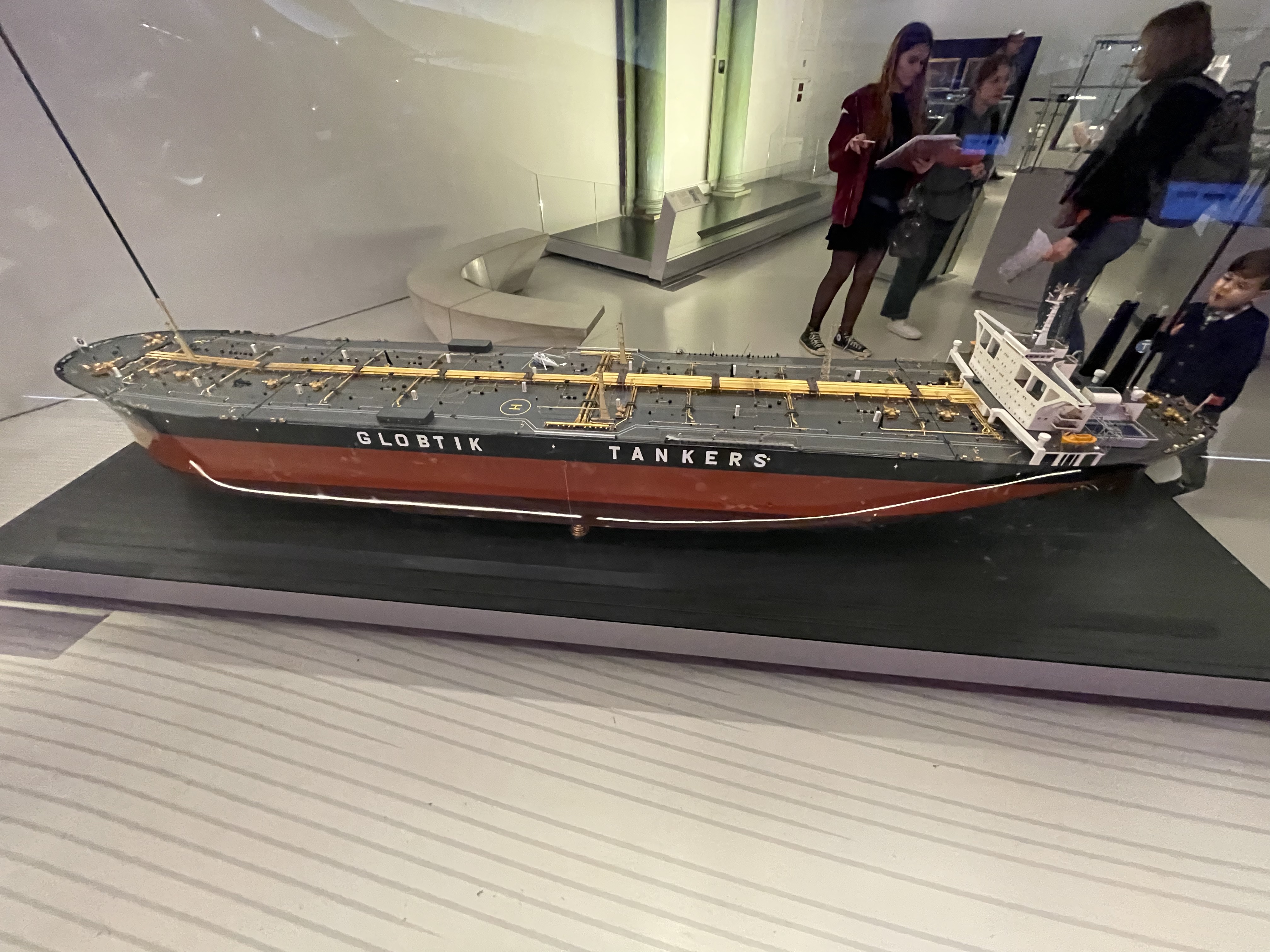Navigation
Author: Robin Reynaud
Our entire economy is based on trading goods across the world with other countries. Mathematics has helped us navigate safely worldwide, contributing to this modern and growing economy. But how exactly has mathematics helped us navigate?
 |
 |
|
| This is a coastal navigator, invented by Norwood Harrison in 1887. Sailors used to travel around the coast to send goods from one town to another, instead of sending them by horse and cart. These coastal sailors developed mathematical tools for navigation, such as this angle-measuring device. This instrument helped sailors avoid treacherous rocks and reefs and allowed them to use coastal landmarks to plot a ship’s position without a direction-finding compass. | This is a model of the Globtik Tokyo, an ultra-large tanker designed to transport 500 million liters of oil from the Persian Gulf to Japan. When it was constructed in 1973, it was the largest ship in the world. In order to maintain low operational costs, the world economy depends on the efficient functioning of ships. The design of a ship's hull plays a vital role in achieving this objective, and research conducted by mathematicians and engineers during the 1860s indicated that a bulbous bow located at the front of a ship resulted in reduced resistance when traveling at high speeds, in contrast to the sharp bow design that was commonly favored for larger ships at that time. |